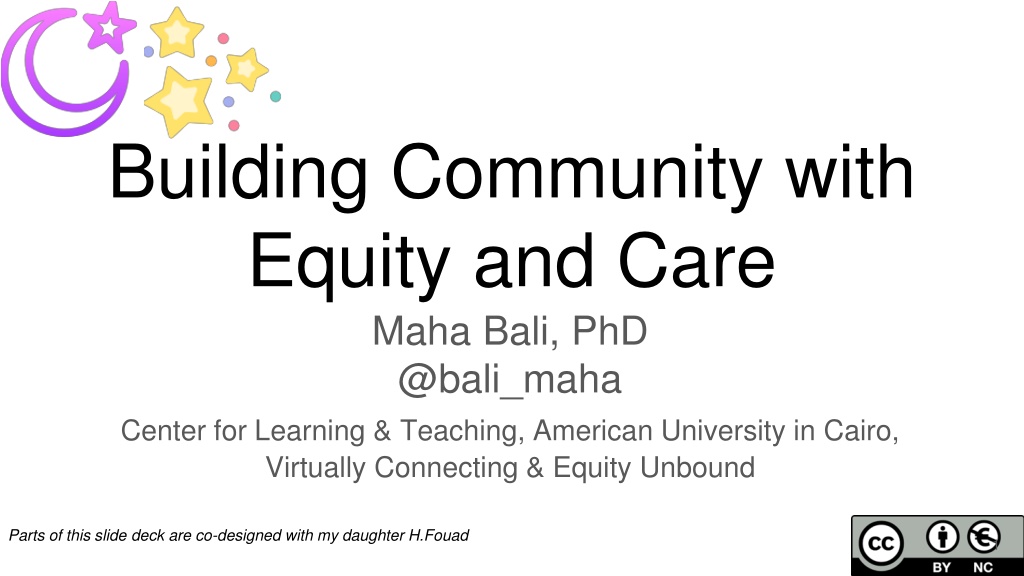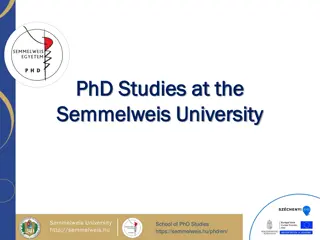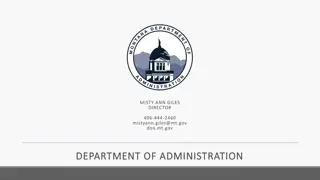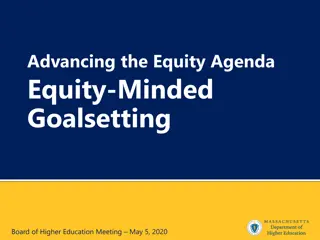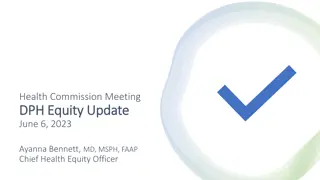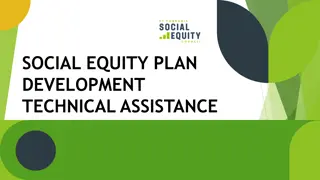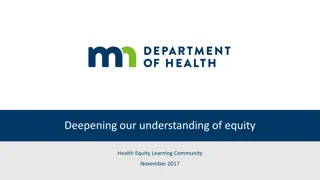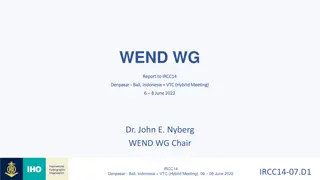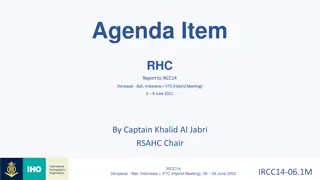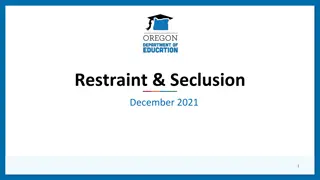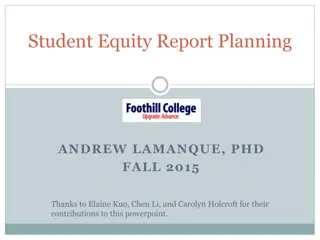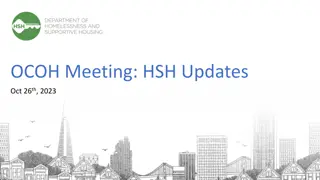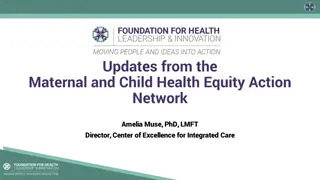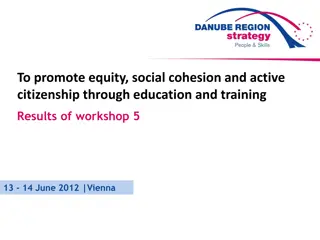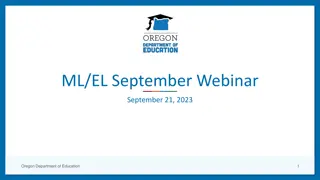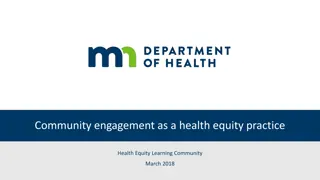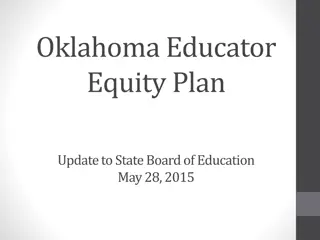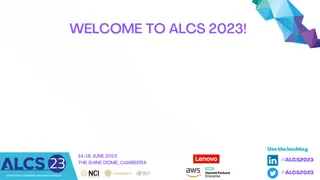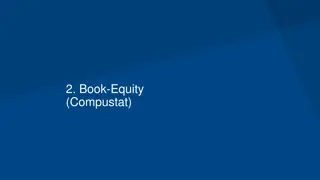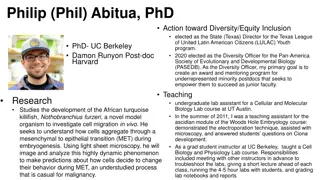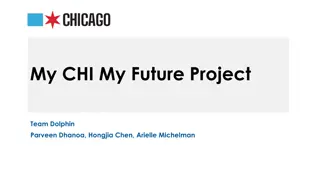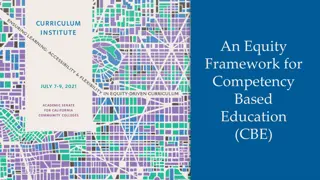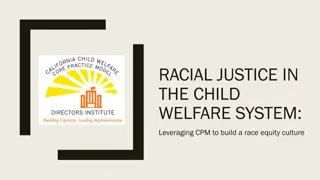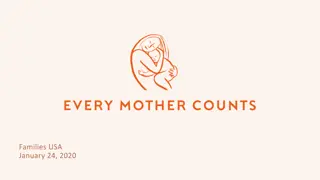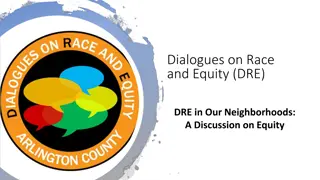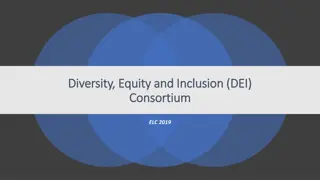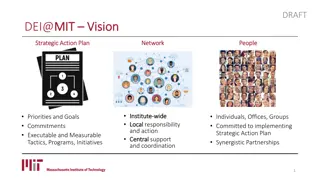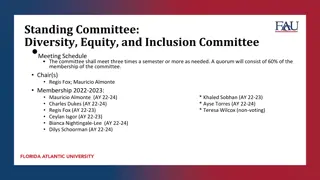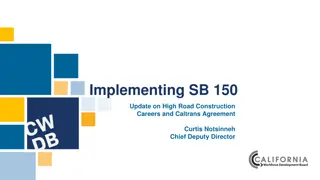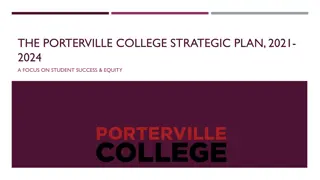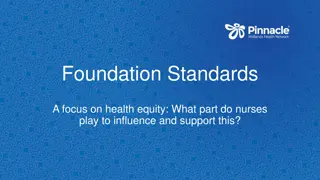Building Community with Equity and Care by Maha Bali, PhD
Maha Bali's slide deck touches on topics such as community building, equity, and care, featuring images and acknowledgments related to indigenous territories. The presentation includes plans for the session, encouraging audience interaction and reflection. The visual elements provoke thought and engagement with the audience in an inclusive manner.
Download Presentation

Please find below an Image/Link to download the presentation.
The content on the website is provided AS IS for your information and personal use only. It may not be sold, licensed, or shared on other websites without obtaining consent from the author. Download presentation by click this link. If you encounter any issues during the download, it is possible that the publisher has removed the file from their server.
E N D
Presentation Transcript
Building Community with Equity and Care Maha Bali, PhD @bali_maha Center for Learning & Teaching, American University in Cairo, Virtually Connecting & Equity Unbound Parts of this slide deck are co-designed with my daughter H.Fouad 1
Ramadan Kareem How are you feeling today? Image from Pixabay https://pixabay.com/photos/horses-kiss- play-affection-3747374/ 2
Territory Acknowledgement We meet here on land that is indigenous territory. The following are the traditional stewards of the land in Ohio: Wyandot, Delaware, Shawnee, Ottawa, Miami, Eel River, Wea, Chippewa, Potawatomi, Kickapoo, Piankashaw, Kaskaskia, Mingo, Seneca and Ojibwa people. From Jasmine Roberts (of OSU) keynote at OERxDomains21 3
Plan for this plenary Checking in Chatterfall Equity & Care New: Roumy Cheese analogy Practical tips for building community online with Intentionally Equitable Hospitality Spiral Journal (key takeaways) 4
These slides are open for commenting (bit.ly/OSUbali) 5
Keynotes appear like the work of one person, but they are inspired by many 6
Chatterfall Please respond in the chat Elijah Hiett on Unsplash 7
What gives you energy these days? 8 Image from Pixabay: https://pixabay.com/photos/sunset-beach-silhouettes-jump-570881/
Tweet 9
What's an important thing you learned or achieved in the past year? 10 Image from Pixabay: https://pixabay.com/photos/sunset-rope-swing-girl-silhouette-5737120/
For me - to be useful to others, especially via community-building resources (onehe.org/equity-unbound) 11 Image from Pixabay: https://pixabay.com/photos/people-jumping-happiness-happy-fun-821624/
What is an unexpected thing that brought you peace or joy recently? 12 Image from Pixabay: https://pixabay.com/photos/hand-gift-bouquet-congratulation-1549399/
Daily gratitude kept my 9 year-old positive during the time I had COVID. I'm encouraging students to do regular gratitude journaling & it is helping them 13
Resource on community building- gratitude journaling (onehe.org/eu-activity/ gratitude-journal) Est e Janssens on Unsplash 14
Equity vs Equality Equity vs Equality flickr photo by MN Pollution Control Agency https://flickr.com/photos/mpcaphotos/31655988501 shared under a Creative Commons (BY-NC) license 16
Not everyone wants an apple... 17 Edited Equity vs Equality flickr photo by MN Pollution Control Agency https://flickr.com/photos/mpcaphotos/31655988501 shared under a Creative Commons (BY-NC) license
Maybe someone needs care an apple won t satisfy their appetite for love (my kid) Edited Equity vs Equality flickr photo by MN Pollution Control Agency https://flickr.com/photos/mpcaphotos/31655988501 shared under a Creative Commons (BY- NC) license 18
Marginality can be visible and invisible. Class background. Sexuality. Chronic or temporary disability when you're communicating online. Maha Bali, Foreword for Voices of Practice: Narrative Scholarship from the Margins (hybridpedagogy.org/foreword-voices-of-practice) 19
What additional images or edits to the image could we make to express nuances? 20
Realizing that image is static. We need to walk/run the talk - marathon not sprint. Lifelong commitment, no shortcuts 21
What about systemic inequality? We need to completely remove doors, not just open them 22
Roumy Cheese analogy (thinking process on my blog) (blog.mahabali.me/educational-technology-2/swiss-cheese- analogy-for-covid-19-rumi-cheese-analogy-for-inclusive-education) 23
Original by Ian McKay is about how no one mode of preventing spread of infection can protect you against the COVID-19 virus, but multiple together can help fill the holes more effectively 24
Original by Ian McKay from Wikimedia Commons CC-BY 4.0 (commons.wikimedia.org/wiki/File:Swiss_cheese_ver3.0.svg) 26
Roumy Cheese Analogy for Caring, Equitable Education Maha Bali CC-BY-SA Adapted from Ian McKay s virus analogy Diverse Causes of Inequity, Need for Care: Can you give examples? 27
Roumy Cheese Analogy for Caring, Equitable Education What are some practices/strategies that can enable us to better create equitable and caring learning spaces? Maha Bali CC-BY-SA Adapted from Ian McKay s virus analogy Black peppercorn represent how some actions meant to promote justice for one group can be harmful for another group Diverse Causes of Inequity, Need for Care: E.g. Racism, classism, heteropatriarchy, ableism, neuronormativity, xenophobia, etc. Can be large (systemic) or small (individual) & intersectional 28
Roumy Cheese Analogy for Caring, Equitable Education Maha Bali CC-BY-SA Adapted from Ian McKay s virus analogy Black peppercorn represent how some actions meant to promote justice for one group can be harmful for another group Diverse Causes of Inequity, Need for Care: E.g. Racism, classism, heteropatriarchy, ableism, neuronormativity, xenophobia, etc. Can be large (systemic) or small (individual) & intersectional 29
Care with Parity of Participation "In the caring approach, we would prefer to advise: do unto others as they would have done unto them." (Noddings) I say: Do unto students as THEY would have done unto THEM) Noddings, N. (2012). The language of care ethics. Knowledge Quest, 40(5), 52. Bali, M. (2020). https://www.timeshighereducation.com/campus/do-unto-students-they-would-have-done-them 30
Care with Parity of Participation Equal partners with equal power to influence decision-making Fraser, N. 2005. Reframing justice in a globalizing world. New Left Review, 36, Nov/Dec. Available from: newleftreview-org 31
Intentionally Equitable Hospitality (elearnmag.acm.org/featured.cfm?aid=3331173) Bali, Caines, Hogue, DeWaard & Friedrich, 2019 32
You are a host building the space Hospitality is your responsibility - Whom do you involve/listen to? How do you make each person welcome? Intentionally Equitable Hospitality Image by OpenClipart-Vectors from Pixabay 33
Intentionally Equitable Hospitality Set your intention. Walk the talk. It won t happen automatically or easily, so you need to set the intention - it is not enough to say oh, I didn t realize 34
Intentionally Equitable Hospitality. Recognize that if you intend to be hospitable to ALL students, you need to pay attention to the inequities faced by EACH student 35
Equity/Care matrix (youtu.be/NEeZvM6_8UE) Bali & Zamora, 2020 and forthcoming 36
Levels of Care & Intentional Equity How do you show it at each level? Pedagogy of Care: Covid-19 Edition (blog.mahabali.me/educational- technology-2/pedagogy-of-care-covid- 19-edition) Personal /Private Respond in Situations Habitual practices in class Course philosophy, design, planning 37
Levels of Care & Intentional Equity: systemic How do you embody it at each level? Pedagogy of Care: Covid-19 Edition (blog.mahabali.me/educational-technology- 2/pedagogy-of-care-covid-19-edition) Personal /Private Speak up in situations Support others, form allyships Advocate for caring, equitable policies institutionally 38
Teachers who care, who serve their students, are usually at odds with the environments wherein we teach Bell Hooks, 2003, Teaching in Community, p. 91 39
Tronto advises us to resist neoliberalism which perpetuates inequality and lack of care: Humans can organize society so that they are not only and always in constant and vicious competition with one another Tronto (2013) p. 146 40
My version for universities: Universities can organize their systems so that faculty and students are not only and always in constant and vicious competition with their peers and one another Tronto (2013) p. 146 41
How might institutions promote equity/care? Reduce competition? Equitable/fair treatment of those employed by the university, from recruitment, to pay, to promotion criteria - to job security Equitable policies for students make it easier for teachers to care for students (e.g. cooperation between departments for students with disabilities) Policies that reduce anxiety during the pandemic - such as P/NP policies, rejecting remote proctoring, etc. Other ways? 42
What do we need to resist to promote equity/care? Reduce competition? Enhance students freedom? 1. Grading systems (arbitrary, competitive) 2. Remote proctoring - normalizing surveillance 3. Timed closed-book exams in general, especially standardized - normalizing authority 4. Arbitrary, strict deadlines that promote anxiety 43
What is EQUITY without CARE and what is CARE without EQUITY? 44
Justice? Parity Of Participation Equity TOKENISM? DIVERSITY THEATER? LIP SERVICE? SYSTEMIC? PERFORMANCE? JUSTICE? PARITY OF PARTICIPATION (Nancy Fraser) Intentionally Equitable Hospitality? No Care Care SELECTIVE & AFFECTIVE LABOR? AMELIORATIVE? BAND-AID? SYSTEMIC INJUSTICE 45 Inequity
Dimensions of Community-building centered on care and equity (onehe.org/equity-unbound) 46
WHY? Many people were new to teaching fully online Many of them did not know how to build community online Inequitable access to faculty development support Building community online is more important than ever due to trauma of pandemic Many will be teaching synchronous, but there will be inequities Care for teachers, so they can care for students 47
the notion that one model of care will work for everyone is absurd...humans vary in their abilities to give and receive care (White & Tronto, 2004, p. 450). Teachers and students vary in their abilities to give and receive care ONLINE! Context also matters! 48
Values Underpinning the Design Intentionally Equitable Hospitality Who has access? Whose culture dominates? Who has political power? Adaptation by design AND adaptation in the moment. For care and equity 49
Some Dimensions Introductions Safety considerations Warm-ups Setting the tone Ongoing community building and interaction 50
